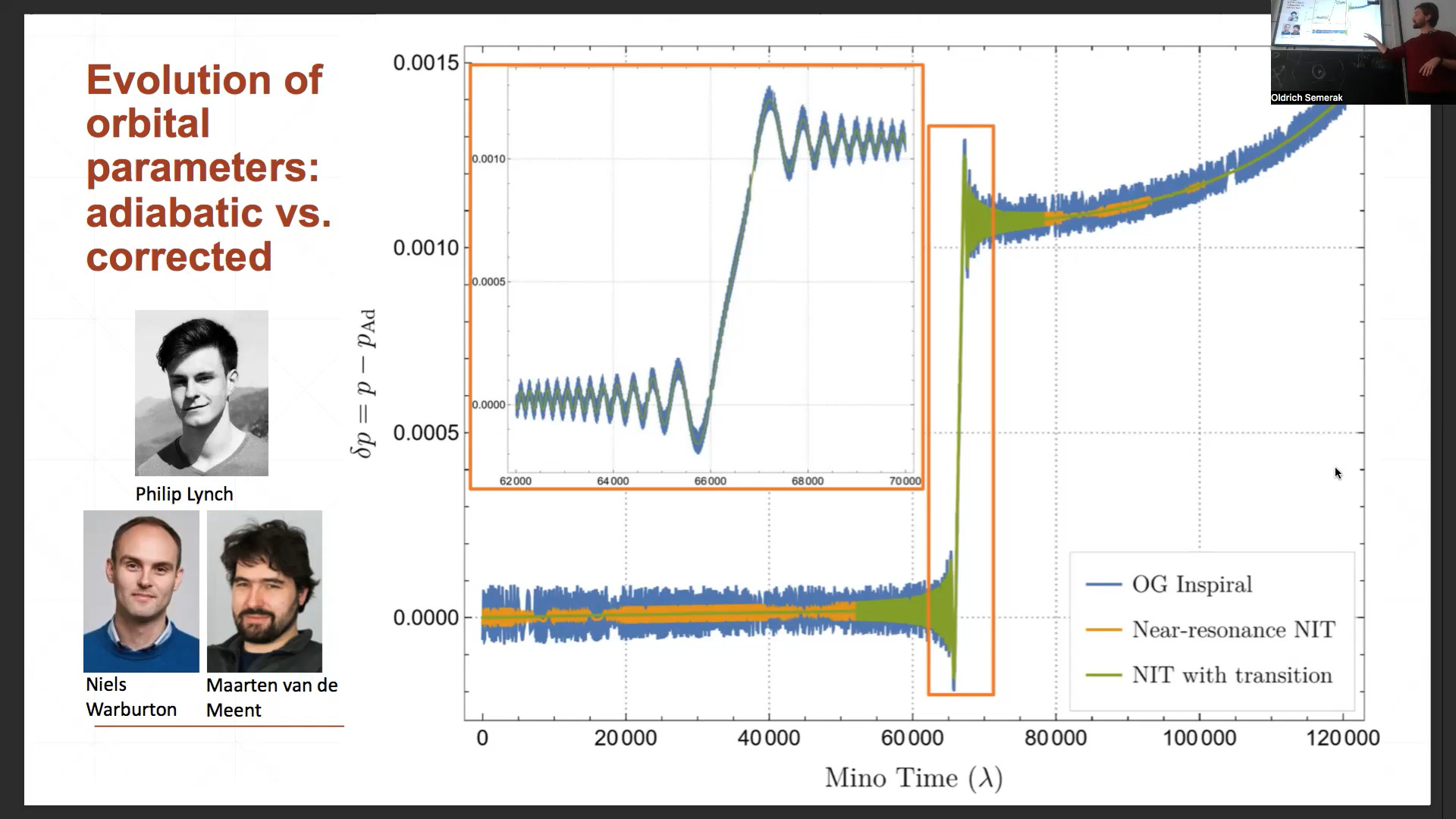We present an approximate time-dependent metric in ingoing Eddington-Finkelstein coordinates for an evaporating nonrotating black hole as a first-order perturbation of the Schwarzschild metric, using the linearized backreaction from a realistic approximation for the stress-energy tensor for the Hawking radiation in the Unruh quantum state.
Slides:

Recording:

Recording:

Recording:

Recording:

We present an analytical expression for the propagation time delay of lightlike geodesics in a Kerr spacetime, including the post-Newtonian Shapiro and frame dragging delays as well as effects due to the multipole structure of the Kerr black hole. As an specific example we discuss in detail the most extreme case of an equatorial egde on pulsar orbit and compare our results to the usual post-Newtonian expressions.
Recording:

Recording:

Recording:

Recording:

Recording:

Recording:

Recording:

Recording:

Recording:
